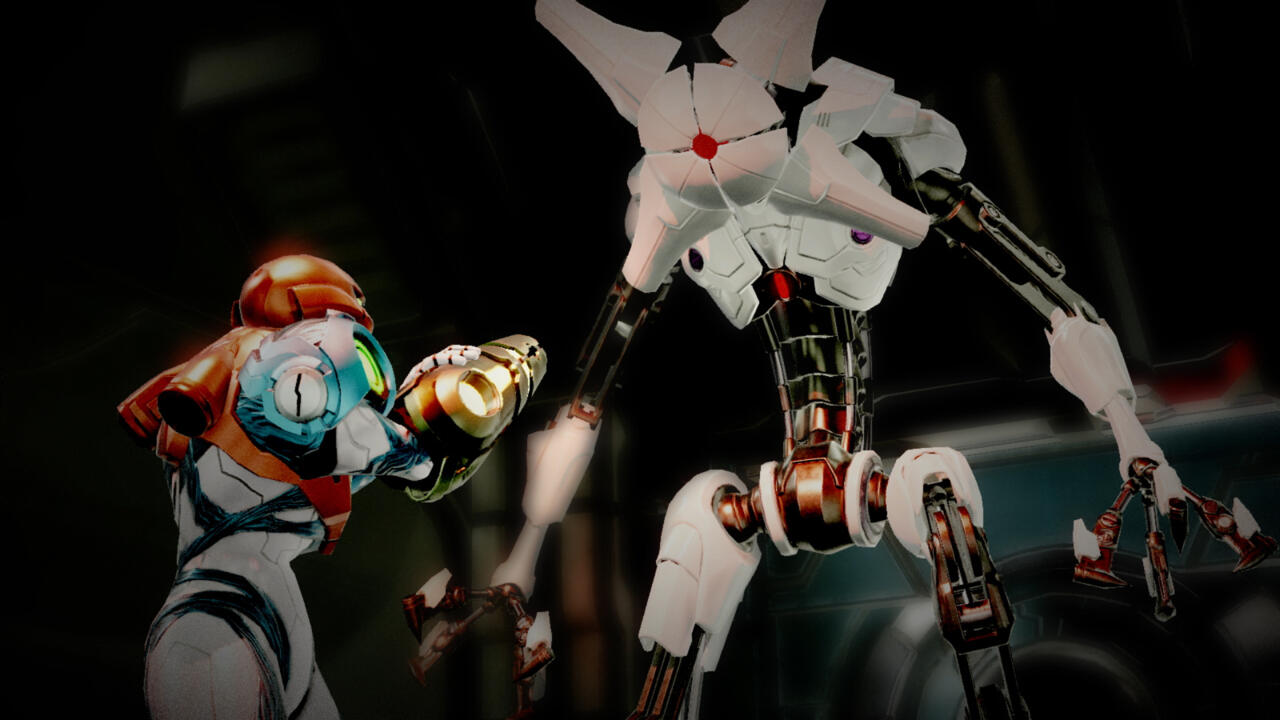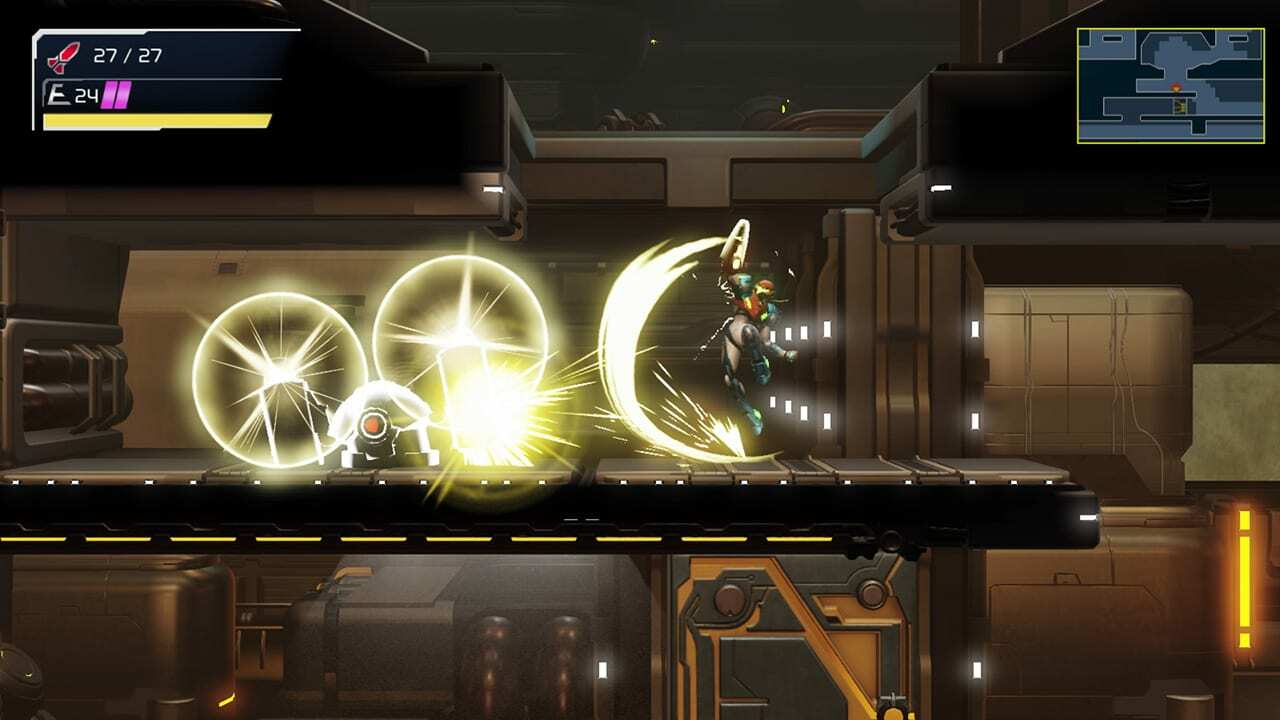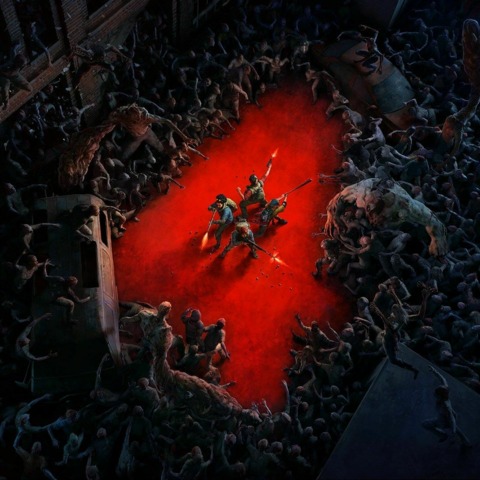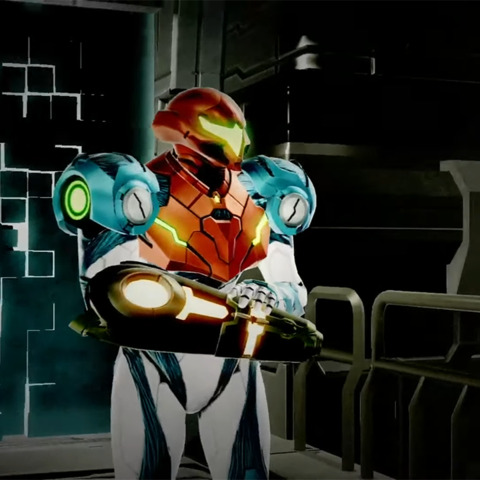Perhaps the biggest surprise to come out of Nintendo's E3 2021 Direct was Metroid Dread, the first brand-new side-scrolling installment in the series in nearly two decades. This isn't the only Metroid game to release in that time, of course; there had been other titles in the interim, most recently 2017's Metroid: Samus Returns. Metroid Dread, though, has been rumored for so long at this point that many fans had presumed it would never materialize. However, series producer Yoshio Sakamoto was always determined to bring the concept to life.
Metroid Dread's history is a long and rocky one. Reports that Nintendo was developing a game with that title first emerged all the way back in 2005, and speculation was further fueled when a Space Pirate log within Metroid Prime 3: Corruption mentioned a "Metroid project Dread" nearing completion. Nintendo publicly denied the reports back then, but Sakamoto confirmed it was indeed in the works. However, the project was ultimately halted due to the limits of the technology at the time.
"I suppose that was around the time that the Nintendo DS was around, and it was just--speaking in terms of the specs that I had in mind--it was a bit difficult to realize that concept with that hardware," Sakamoto said via an interpreter during a digital E3 panel.
According to Sakamoto, these technical limitations forced the team to put Metroid Dread on hold. He revisited the concept a few years later, but the project stalled again due to the same hurdles: "At the time that we came up with the idea [for Metroid Dread], the hardware wasn't there, the technological concepts weren't working with our vision, so we had to put it on hold. And then some time later we started again, but then we stopped again for pretty much the same reasons."
Hades 2 Is Already An Exciting Sequel With Confident Changes | Technical Test Impressions Firearms Expert Reacts to Fallout 76's Guns Fallout 4 Next Gen Update Comparison Why Are Video Game Adaptations Good Now? | Spot On Fallout 4 Steam Deck Verified Gameplay ALIEN: Rogue Incursion - Announcement Teaser Trailer Stellar Blade - 13 Things I Wish I Knew S.T.A.L.K.E.R. 2: Heart of Chornobyl — Official "Not a Paradise" Trailer Honkai: Star Rail - "Then Wake to Weep" | Version 2.2 Trailer Devil May Cry: Peak Of Combat | Dante: Blazing Tempest Gameplay Trailer SAND LAND — Official Launch Trailer Sea of Thieves Season 12: Official Content Update Video
Please enter your date of birth to view this video
By clicking 'enter', you agree to GameSpot's
Terms of Use and Privacy Policy
With the arrival of the Nintendo Switch, technology had finally caught up to Sakamoto's vision, but the biggest factor that allowed him to finally create Metroid Dread was MercurySteam, the studio behind Metroid: Samus Returns. Sakamoto said that the initial reason for his meeting with the team was not the Metroid II remake for the 3DS, but rather Dread: "The reason that I actually met with [MercurySteam] was in the hopes that they'd be able to realize the concepts that I had for Metroid Dread, and with their ability and their technical know-how that they'd be able to make what was once a concept an actual reality."
Despite the 15-year wait to realize Metroid Dread, Sakamoto said its core conceit has remained the same since the beginning. "The whole entire concept hasn't changed over these 15 years. Really, it was that Samus, this powerful warrior, would be confronted with some overwhelming enemy that would chase her, and that was the idea."
This overwhelming foe takes the form of the EMMI, menacing research robots that stalk certain sectors of planet ZDR, Metroid Dread's setting. The EMMI were initially deployed by the Galactic Federation to collect DNA samples from unknown lifeforms on the planet, but something has turned them into literal killing machines. It becomes Samus's mission to unravel this mystery and stop the murderous robots.
Each EMMI patrols a different zone of ZDR, cordoned off by pixelated doors, and their presence completely changes the game's atmosphere. Once you step into an EMMI's territory, the music subsides, and the eerie beeps the EMMI emits can be heard echoing around you, creating a genuinely unnerving atmosphere. What's more, the EMMI are effectively indestructible; the robots are impervious to Samus's weaponry, giving you no choice but to flee if you encounter one. Getting caught means almost certain death. You'll have a very small window of opportunity to escape the EMMI's grasp--even tighter than the one to execute the game's counterattack, Nintendo says--but if you fail, it's the end of Samus's adventure.

The EMMI are immediately reminiscent of the SA-X, the unstoppable clone that stalked Samus in Metroid Fusion. This is no coincidence; according to Sakamoto, the team wanted to expand on the tension that players felt when being chased by the SA-X with Metroid Dread. "We wanted to take that style of gameplay and put it into what is considered to be the normal Metroid gameplay to make for an exciting experience," Sakamoto said.
This pervasive sense of fear makes Dread a fitting moniker for the latest Metroid game, and it teeters even more obviously into horror than previous installments in the series have. However, Sakamoto doesn't consider Metroid Dread to be a horror game: "From our perspective, this isn't a game that is part of the horror genre, although it may have seemed that way. It's really about Samus encountering fear, but she actually stands against that fear and fights it and beats it, and that part of it is important."
To deal with this unstoppable threat, Samus will acquire new powers as she explores planet ZDR, including one called the Phantom Cloak. This ability renders the hunter invisible, allowing her to evade an EMMI's detection. However, it can't be used indefinitely. The Phantom Cloak slowly depletes an energy gauge, and after a certain point, it will begin draining your health, meaning you won't be able to hide from the EMMI forever; you'll need to employ it strategically.
Samus's repertoire has also been expanded with some new moves, making the bounty hunter more agile than ever before. The melee parry introduced in Samus Returns has been tweaked in Metroid Dread, letting you now counterattack while moving. Samus has also gained a new slide ability that allows you to slip through tight spaces and move around the environment quickly. These new skills make the gameplay look fast and fluid, and Nintendo confirmed the game runs at 60fps.

The biggest mystery surrounding Metroid Dread is its story. Each chapter in the franchise thus far has revolved around Samus and the life-sucking aliens that lend the series its name, but Sakamoto has teased that Metroid Dread will mark the end of this particular arc:
"The Metroid story until this point has dealt with Samus's strange fate that's been intertwined around this being called the Metroid, and until now, that has been the focus of the series. But what this game represents is a bit of a pause, or kind of a new start to something else. Nobody wants the Metroid series to end and we know that; we ourselves don't want that either. But we just want people to know there is some kind of new episode that is waiting in the works, and we want you to look forward to what we do with that next, but there are no specifics now."
Metroid Dread launches for Nintendo Switch on October 8. Alongside the game, Nintendo is releasing a new set of Amiibo figures based on Samus and an EMMI. You can learn more in our Metroid Dread preorder guide.
E3 2021 News & Announcements
- Nintendo Switch OLED Announced, Coming October 8
- E3 2021: Schedule, Participants, And What To Expect
- Xbox & Bethesda E3 Showcase Announcements: Starfield, Halo Infinite, Diablo 2
- + Show More E3 2021 News & Announcements Links (4)
- Nintendo Direct E3 2021 Announcements: Breath Of The Wild 2, Metroid Dread, Advance Wars
- E3 2021 Games Confirmed So Far
- Ubisoft Forward E3 2021 Announcements: Far Cry 6, Mario + Rabbids 2, Avatar
- Square Enix E3 2021 Stream Announcements: Guardians Of The Galaxy, Final Fantasy Origin, Babylon's Fall
Quotes used within this piece have been edited and condensed for clarity.





